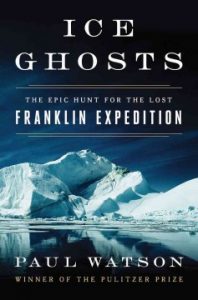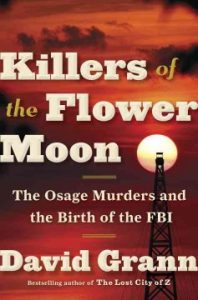
First off, dear readers, some sincere apologies for missing you this week. A Kafka-esque combination of end-of-semester stress, a random power-outage, and plain old poor time-management skills meant that we didn’t get a chance to celebrate our new releases this past Friday. So, as a means of making amends, we present you here with The List That Should Have Been, along with an extra book to make the alliteration complete. We sincerely hope it gets your week started off on best of footings!
And now, without further ado, here are some of the excellent books that have traipsed up onto our shelves this week:

 The Stars are Fire: Anita Shreve’s newest book turns to a real-life event–the 1947 fire that became the largest in the history of the state of Maine (and which, incidentally, is also prominently featured and fictionalized in Stephen King’s Salem’s Lot). In October 1947, after a summer long drought, fires break out all along the Maine coast from Bar Harbor to Kittery and are soon racing out of control from town to village. Five months pregnant, Grace Holland is left alone to protect her two toddlers when her husband, Gene, joins the volunteer firefighters. Along with her best friend, Rosie, and Rosie’s two young children, Grace watches helplessly as their houses burn to the ground, the flames finally forcing them all into the ocean as a last resort. The women spend the night frantically protecting their children, and in the morning find their lives forever changed: homeless, penniless, awaiting news of their husbands’ fate, and left to face an uncertain future in a town that no longer exists. But in the midst of such devastation, Grace finds a freedom she never dreamed existed–and one she may not have the strength to keep. In it’s own way, this, too, is a story about growing in the face of adversity, as well as being a study on love, loyalty, and self-hood that Library Journal (who also named this book an Editor’s Pick) stated categorically: “This is sure to be a best seller. Shreve’s prose mirrors the action of the fire, with popping embers of action, licks of blazing rage, and the slow burn of lyrical character development. Absolutely stunning.”
The Stars are Fire: Anita Shreve’s newest book turns to a real-life event–the 1947 fire that became the largest in the history of the state of Maine (and which, incidentally, is also prominently featured and fictionalized in Stephen King’s Salem’s Lot). In October 1947, after a summer long drought, fires break out all along the Maine coast from Bar Harbor to Kittery and are soon racing out of control from town to village. Five months pregnant, Grace Holland is left alone to protect her two toddlers when her husband, Gene, joins the volunteer firefighters. Along with her best friend, Rosie, and Rosie’s two young children, Grace watches helplessly as their houses burn to the ground, the flames finally forcing them all into the ocean as a last resort. The women spend the night frantically protecting their children, and in the morning find their lives forever changed: homeless, penniless, awaiting news of their husbands’ fate, and left to face an uncertain future in a town that no longer exists. But in the midst of such devastation, Grace finds a freedom she never dreamed existed–and one she may not have the strength to keep. In it’s own way, this, too, is a story about growing in the face of adversity, as well as being a study on love, loyalty, and self-hood that Library Journal (who also named this book an Editor’s Pick) stated categorically: “This is sure to be a best seller. Shreve’s prose mirrors the action of the fire, with popping embers of action, licks of blazing rage, and the slow burn of lyrical character development. Absolutely stunning.”
 The Last Neanderthal: Claire Cameron’s newest release is set in a world perhaps even more alien to us that any futuristic one–she begins 40,000 years ago with some of the last Neanderthals (a sibling species to homo sapiens). After a crushingly hard winter, their numbers are low, but Girl, the oldest daughter, is just coming of age and her family is determined to travel to the annual meeting place and find her a mate. But the unforgiving landscape takes its toll, and Girl is left alone to care for Runt, a foundling of unknown origin. As Girl and Runt face the coming winter storms, Girl realizes she has one final chance to save her people, even if it means sacrificing part of herself. In the modern day, archaeologist Rosamund Gale works well into her pregnancy, racing to excavate newly found Neanderthal artifacts before her baby comes. Linked across the ages by the shared experience of early motherhood, both stories examine the often taboo corners of women’s lives. By uniting the past and the present in such a concrete and tangible manner, Cameron offers the premise that, even though their features and habit may have changed, the human heart, its ability to feel and to break and to change the world around itself, is a thing that never alters. Publisher’s Weekly gave this book a starred review, noting that “[The] book’s greatest strength [is] its ability to collapse time and space to draw together seemingly dissimilar species: ancestors and successors, writer and reader.”
The Last Neanderthal: Claire Cameron’s newest release is set in a world perhaps even more alien to us that any futuristic one–she begins 40,000 years ago with some of the last Neanderthals (a sibling species to homo sapiens). After a crushingly hard winter, their numbers are low, but Girl, the oldest daughter, is just coming of age and her family is determined to travel to the annual meeting place and find her a mate. But the unforgiving landscape takes its toll, and Girl is left alone to care for Runt, a foundling of unknown origin. As Girl and Runt face the coming winter storms, Girl realizes she has one final chance to save her people, even if it means sacrificing part of herself. In the modern day, archaeologist Rosamund Gale works well into her pregnancy, racing to excavate newly found Neanderthal artifacts before her baby comes. Linked across the ages by the shared experience of early motherhood, both stories examine the often taboo corners of women’s lives. By uniting the past and the present in such a concrete and tangible manner, Cameron offers the premise that, even though their features and habit may have changed, the human heart, its ability to feel and to break and to change the world around itself, is a thing that never alters. Publisher’s Weekly gave this book a starred review, noting that “[The] book’s greatest strength [is] its ability to collapse time and space to draw together seemingly dissimilar species: ancestors and successors, writer and reader.”
 Ice Ghosts : The Epic Hunt for the Lost Franklin Expedition: I’l not ashamed to admit that the news of the discovery of the HMS Terror–the ship that carried the doomed Franklin Expedition in their quest to locate the Northwest Passage–in 2016 was perhaps my favorite news story of the year. A journalist by training, Watson was on the icebreaker that led the expedition that discovered the HMS Erebus in 2014, and he broke the news of the discovery of the HMS Terror in 2016, and in this book he weaves together an account of the legendary Franklin Expedition of 1845 (whose two ships, the HMS Erebus and the HMS Terror, and their crew of 129 were lost to the Arctic ice) with the modern tale of the scientists, researchers, divers, and local Inuit behind the recent discoveries of the two ships, and the way that oral tradition provided the information scientists needed to find one of the most famous wrecks in modern history. Booklist calls this work “Riveting. . . . An engrossing chronicle of a legendary doomed naval voyage and the nearly 200-year effort to bring the Franklin Expedition to a close.” I can’t wait to read it–how about you?
Ice Ghosts : The Epic Hunt for the Lost Franklin Expedition: I’l not ashamed to admit that the news of the discovery of the HMS Terror–the ship that carried the doomed Franklin Expedition in their quest to locate the Northwest Passage–in 2016 was perhaps my favorite news story of the year. A journalist by training, Watson was on the icebreaker that led the expedition that discovered the HMS Erebus in 2014, and he broke the news of the discovery of the HMS Terror in 2016, and in this book he weaves together an account of the legendary Franklin Expedition of 1845 (whose two ships, the HMS Erebus and the HMS Terror, and their crew of 129 were lost to the Arctic ice) with the modern tale of the scientists, researchers, divers, and local Inuit behind the recent discoveries of the two ships, and the way that oral tradition provided the information scientists needed to find one of the most famous wrecks in modern history. Booklist calls this work “Riveting. . . . An engrossing chronicle of a legendary doomed naval voyage and the nearly 200-year effort to bring the Franklin Expedition to a close.” I can’t wait to read it–how about you?
 Killers of the Flower Moon: The Osage murders and the birth of the FBI: In the 1920s, the richest people per capita in the world were members of the Osage Indian nation in Oklahoma. After oil was discovered beneath their land, they rode in chauffeured automobiles, built mansions, and sent their children to study in Europe. Then, one by one, the Osage began to be killed off. The family of an Osage woman, Mollie Burkhart, became a prime target. Her relatives were shot and poisoned. And it was just the beginning, as more and more members of the tribe began to die under mysterious circumstances. As the death toll climbed to more than twenty-four, the FBI took up the case. It was one of the organization’s first major homicide investigations and the bureau badly bungled the case. In desperation, the young director, J. Edgar Hoover, turned to a former Texas Ranger named Tom White to unravel the mystery. White put together an undercover team, including one of the only American Indian agents in the bureau. The agents infiltrated the region, struggling to adopt the latest techniques of detection. Together with the Osage they began to expose one of the most chilling conspiracies in American history. Journalist David Grann is an excellent researcher, and a master at spinning gripping, suspenseful yarns that brings a chilling, under-researched piece of American history to light in a work that USA Today calls “A shocking whodunit…What more could fans of true-crime thrillers ask?”
Killers of the Flower Moon: The Osage murders and the birth of the FBI: In the 1920s, the richest people per capita in the world were members of the Osage Indian nation in Oklahoma. After oil was discovered beneath their land, they rode in chauffeured automobiles, built mansions, and sent their children to study in Europe. Then, one by one, the Osage began to be killed off. The family of an Osage woman, Mollie Burkhart, became a prime target. Her relatives were shot and poisoned. And it was just the beginning, as more and more members of the tribe began to die under mysterious circumstances. As the death toll climbed to more than twenty-four, the FBI took up the case. It was one of the organization’s first major homicide investigations and the bureau badly bungled the case. In desperation, the young director, J. Edgar Hoover, turned to a former Texas Ranger named Tom White to unravel the mystery. White put together an undercover team, including one of the only American Indian agents in the bureau. The agents infiltrated the region, struggling to adopt the latest techniques of detection. Together with the Osage they began to expose one of the most chilling conspiracies in American history. Journalist David Grann is an excellent researcher, and a master at spinning gripping, suspenseful yarns that brings a chilling, under-researched piece of American history to light in a work that USA Today calls “A shocking whodunit…What more could fans of true-crime thrillers ask?”
 Incendiary: The Psychiatrist, the Mad Bomber, and the Invention of Criminal Profiling: It’s a good week for true crime in American History books, dear readers, and or almost two decades, no public place in New York City seemed safe from the man who signed his anonymous letters “FP” and left his lethal devices in phone booths, storage lockers, even tucked into the plush seats of movie theaters. Desperate to end the threat before any more innocent people were maimed, Police Captain Howard Finney sought the help of a little known psychiatrist, Dr. James Brussel, whose expertise was the criminal mind. Examining crime scene evidence and the strange wording in the bomber’s letters, he compiled a portrait of the suspect down to the cut of his jacket. But how to put a name to the description? Seymour Berkson―a handsome New York socialite, protégé of William Randolph Hearst, and publisher of the tabloid The Journal-American―joined in pursuit of the Mad Bomber. The three men hatched a brilliant scheme to catch him at his own game. Together, they would capture a monster and change the face of American law enforcement. Cannell paints a fascinating portrait of place and time in this book, making the race to trace down the villainous ‘F.P.’ into a richly detailed exploration of New York City. Publisher’s Weekly agrees, noting “Cannell is at his best in making the impact of F.P.’s crimes palpable: he conveys in detail the dangers faced by the members of the NYPD Bomb Squad . . . and aptly captures the state of terror created by explosions in random places such as movie theaters and train station restrooms.”
Incendiary: The Psychiatrist, the Mad Bomber, and the Invention of Criminal Profiling: It’s a good week for true crime in American History books, dear readers, and or almost two decades, no public place in New York City seemed safe from the man who signed his anonymous letters “FP” and left his lethal devices in phone booths, storage lockers, even tucked into the plush seats of movie theaters. Desperate to end the threat before any more innocent people were maimed, Police Captain Howard Finney sought the help of a little known psychiatrist, Dr. James Brussel, whose expertise was the criminal mind. Examining crime scene evidence and the strange wording in the bomber’s letters, he compiled a portrait of the suspect down to the cut of his jacket. But how to put a name to the description? Seymour Berkson―a handsome New York socialite, protégé of William Randolph Hearst, and publisher of the tabloid The Journal-American―joined in pursuit of the Mad Bomber. The three men hatched a brilliant scheme to catch him at his own game. Together, they would capture a monster and change the face of American law enforcement. Cannell paints a fascinating portrait of place and time in this book, making the race to trace down the villainous ‘F.P.’ into a richly detailed exploration of New York City. Publisher’s Weekly agrees, noting “Cannell is at his best in making the impact of F.P.’s crimes palpable: he conveys in detail the dangers faced by the members of the NYPD Bomb Squad . . . and aptly captures the state of terror created by explosions in random places such as movie theaters and train station restrooms.”
Until next week, beloved patrons–happy reading!

 The Book of Joan
The Book of Joan